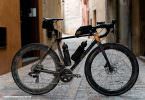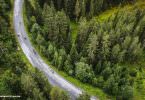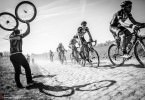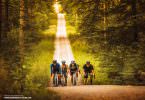No longer limited to road, gravel and cyclo-cross, our repertoire of potential riding terrains is ever expanding, so when we clocked beach racing–call it cyclo-cross meets road racing with a sea air twist–our interest was certainly piqued. We duly packed our waterproof riding kit and headed to the coast of Northern Holland to experience the latest favourite for the lowlands.
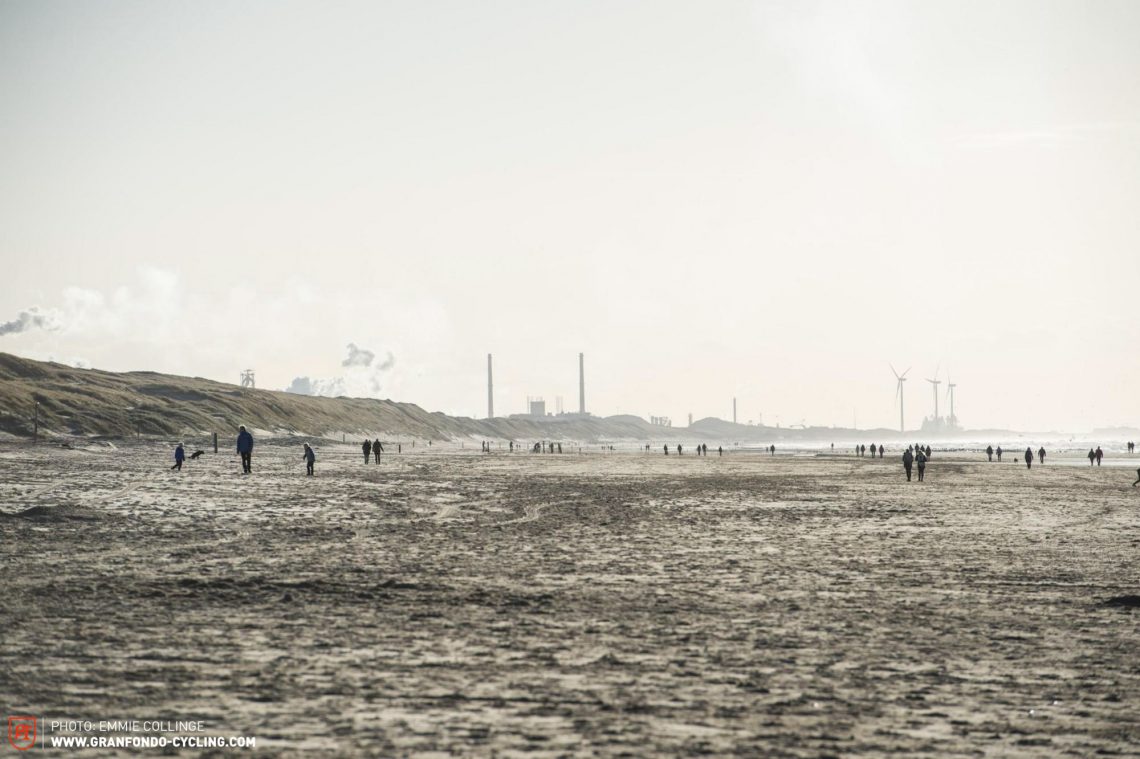
This rapidly growing race scene has been quietly flourishing in the coastal towns of Belgium and Holland for the past decade. Five years ago there were only a handful of races, and now you can race every weekend, with a thriving illegal race scene too, official start money and full professionals. The hottest subgenre of late, beach racing is only really permitted in winter when the beaches are vacant apart from some hardy dog walkers. You’ve got purpose-built bikes for the sport, and it asks for a whole new set of skills that sidestep conventional mountain biking and cyclo-cross techniques, meaning that riders from road and off-road disciplines are on a significantly more level playing field. There’s increasing momentum behind this discipline too and it’s even been newly affiliated by the UCI. The races are usually out-and-back, which means you’re likely to face some mean head winds in one direction and crazy tail winds in the other. But beach racing is by no means all about speed; race organisers can add in loops into the dunes, obstacles, and tight turns to increase the excitement levels.
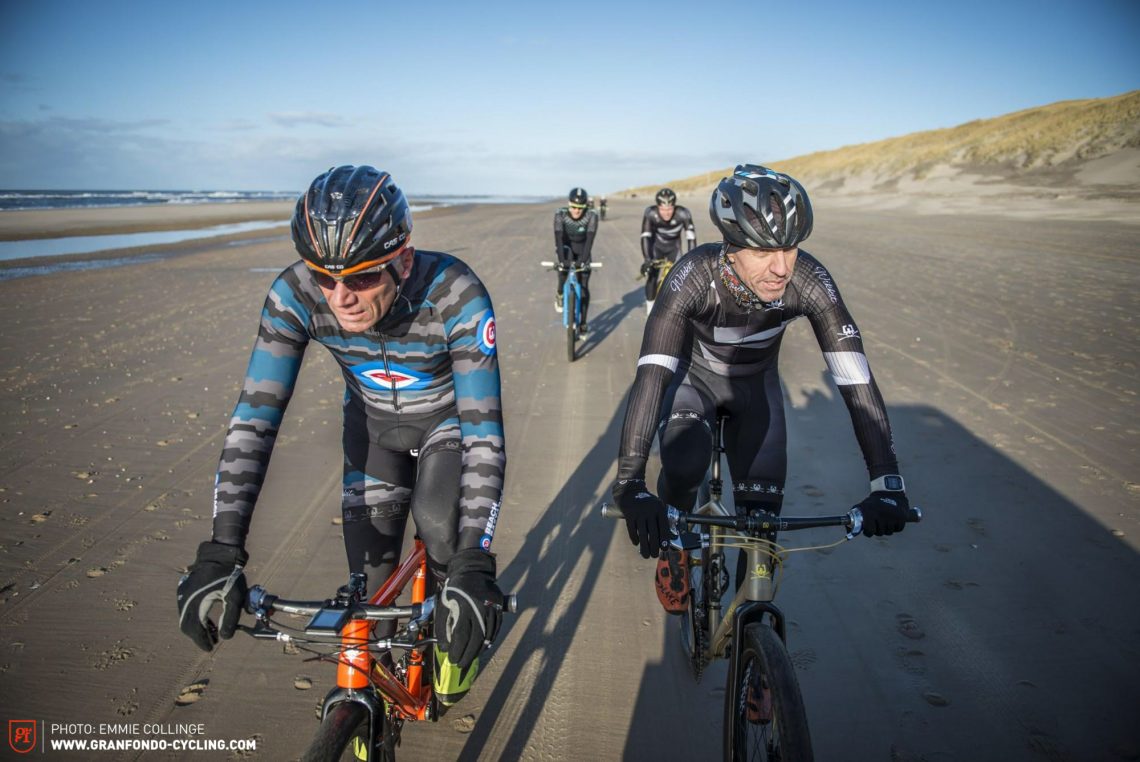
We hang out with Dennis Bruin from Wikkit Cycles and co-owner of Egmond aan Zee’s Beach Bastards bike shop. Not only is he our host for the trip, he’s also one of the forerunners of the sport. He explains how him and other locals have always ridden on the beaches during winter, and that it was only a matter of time before people decided to take their winter training rides to the next level by creating competitions. Today, there’s everything from ad hoc pop-up-style unlicensed racing with sound systems on the beach to mass participation events with thousands taking to the start line.
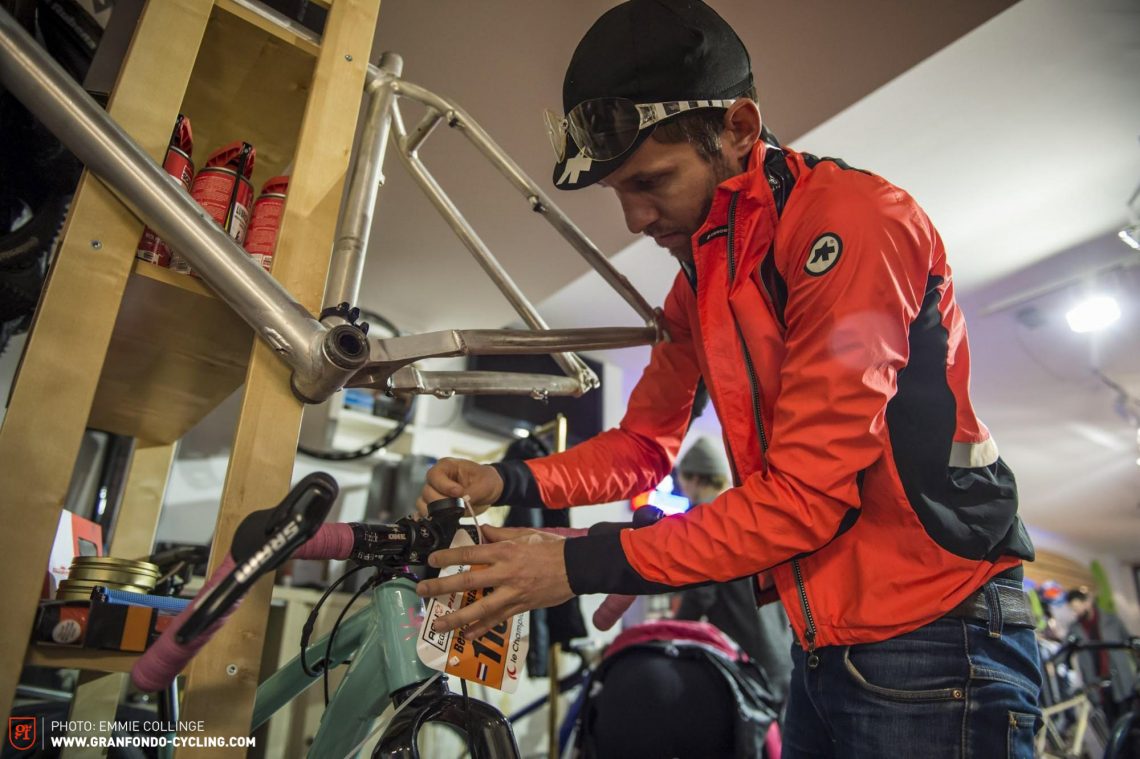
Egmond Pier Egmond is the biggest race in the calendar and we’ve bagged an entry for Bruin’s Beach Bastards team. It’s held over 36 km and follows an out-and-back course from Egmond aan Zee, with a cyclo-cross style detour on the return stretch, looping into the dunes with steps to ride down and tight turns to tackle. This may not sound like a challenge, but take the deep sand at the edge of the beach as well as the very soft tyre pressure used and you’ll start to get a feeling for this unique type of racing. First held in 1998, Egmond played a pivotal role in the beach racing movement and has since cemented its reputation as a leading race in the scene. Despite welcoming thousands of rider, this race still retains an under-the-radar intimacy. This beach town with its cosy cafes and shops selling nautical trinkets is wholly unfazed by the race, going about its daily winter routine.
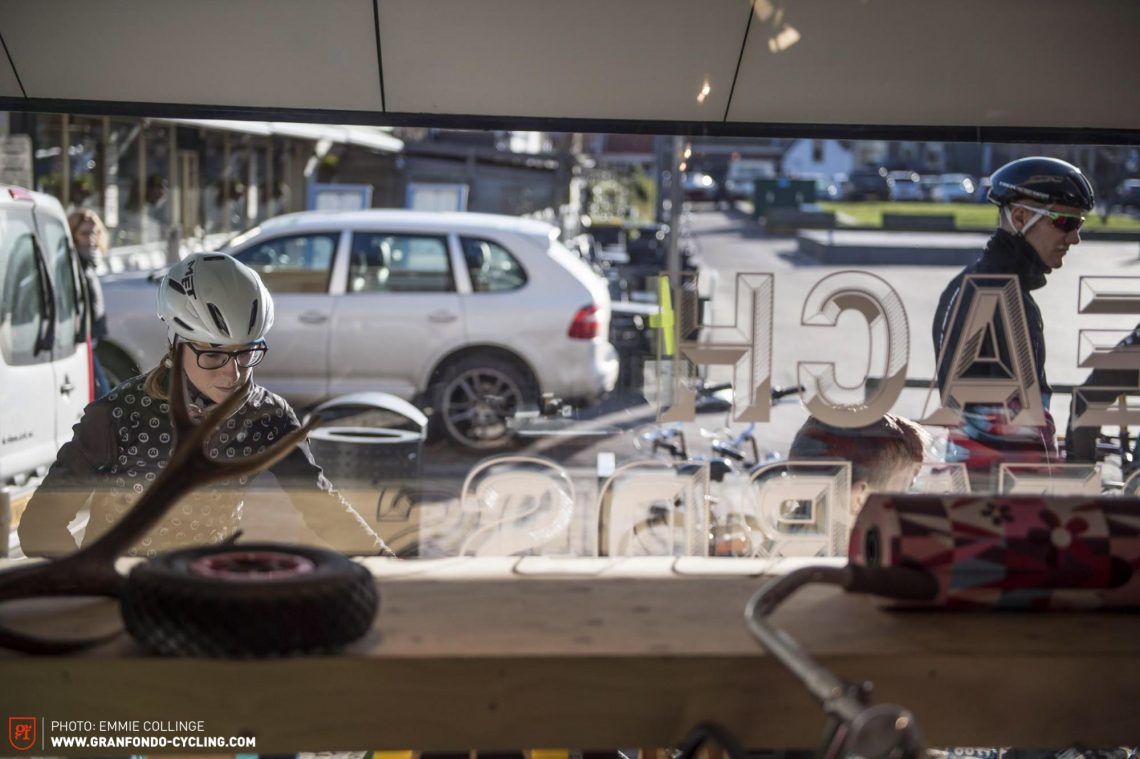
‘The weather is certainly going to play a big part on Saturday,’ Bruin explains. With his own hand-made Wikkit beach bikes on display in his shop, this former surfer and general all-round bike guru is a wealth of knowledge. As the locals mill around outside, Bruin makes us a fresh coffee that beats the hotel’s tepid breakfast one. ‘We’ve all seen the forecast for Saturday. There’ll be really strong winds, plus you’ll be racing at high tide, with soft sand conditions and rain, so I think that the way out is going to be slow, but on the way back we’ll be hitting 60 to 70kph for sure,’ he continues with a wry smile and a vague hint of a Dutch accent. He gestures at the distinguished-looking bikes and throws a hand in the direction of the sea: ‘Hit it hard when you transition onto the beach, keep the gear nice and easy and your eyes straight ahead. Steer with your knees, not your bars and keep your weight back.’
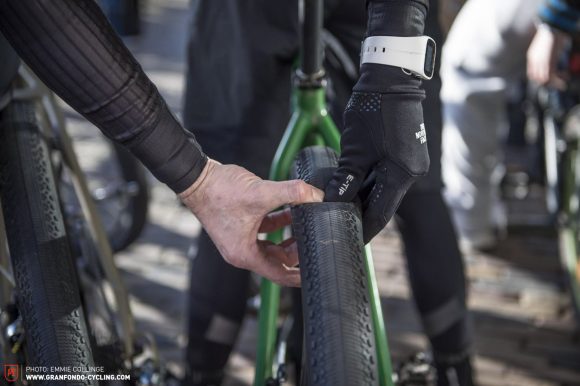
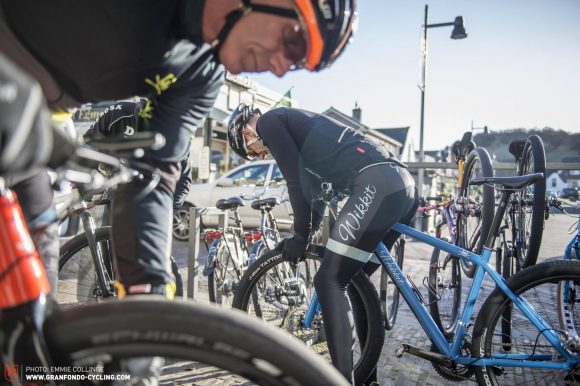
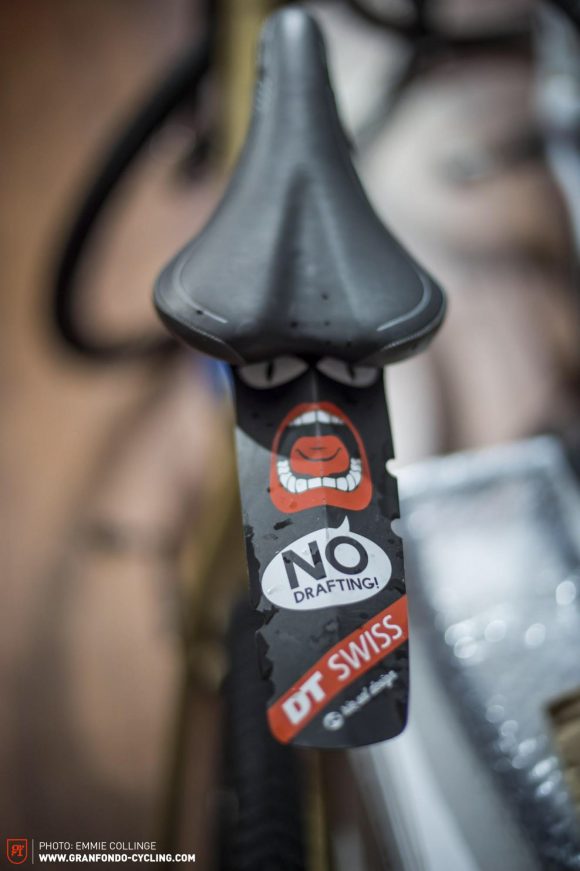
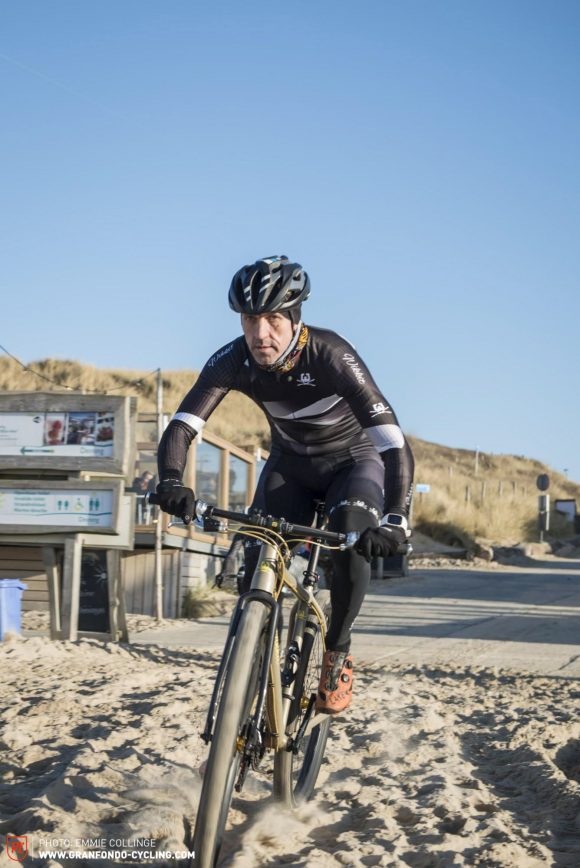
After setting up the bike, a Wikkit Q-Bomb with a positively spongy 0.8 bar in the tyres, and a noticeably long geometry, we head to the beach. This is just a taster to get a feeling for riding on the sand, but it’s deceptively hard and demands a lot of power. On the third attempt to bridge from the promenade to the hard sand where the waves are breaking, we finally make it on the wheel of Dennis and follow his shouts of: ‘power, power, look ahead, yeah go go go.’ From this vantage point, the vastness of sand disappearing into the distance opens up to us. It is odd to recall the warnings of Dennis once on the beach that riding on sand is actually more dangerous than riding on the road. He explains: ‘I’m currently coming back from a bad accident. In my last race we were fighting for position to get onto the beach and the guy in front of me hit some deep sand and caught his bars under the arm of the guy next to him. He went down super hard, I could hear his leg break like the crack of a gun, then I went into him. This issue is that sand, soft sand just holds you when you crash. If you go down on the road or in the woods you normally roll, meaning your energy is lost, we didn’t and both of us are still recovering from the crash.’
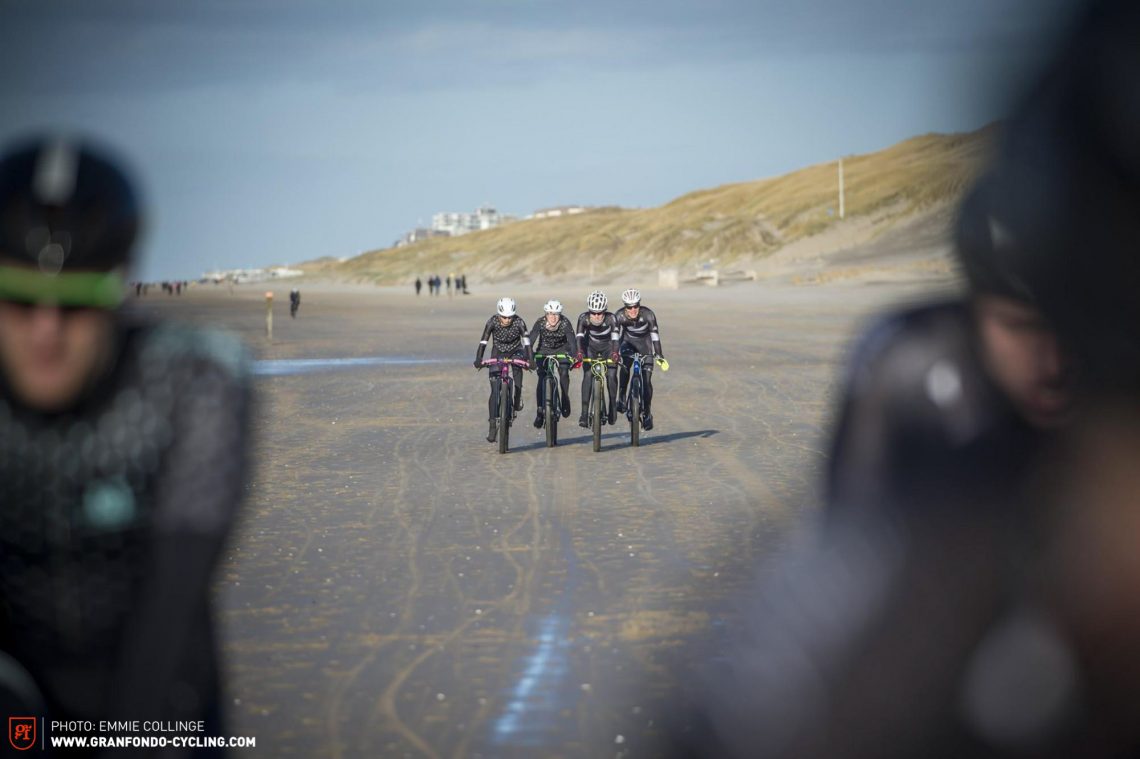

With today’s impeccable sand conditions, it feels like a smooth woodland trail but with views that stretch for miles. Cold, clear and crisp, we quickly form into a small group, highlighting the road riding-like need to work together in the sport. We have the beach to ourselves but for the handful of dog walkers and curious tourists, who’ve braved the 25 minute train ride from Amsterdam. The beach is unlike any terrain we’ve ever ridden and the sense of freedom is felt by all. When our training ride comes to an end, it is clear that on Saturday we’ll need to be ready to work hard, following the right wheels because tactical skills will save the day and it will be advantageous to follow someone who knows how to read the sand. Dennis tells us sagely to find someone with local knowledge of the sand: ‘20cm can make all the difference for your line. Us locals read the sand by its colour. The low pressure this week means that the water held in the dunes will have drained into the sand, welling up and making it really heavy. It’s going to be hard this weekend for sure.’
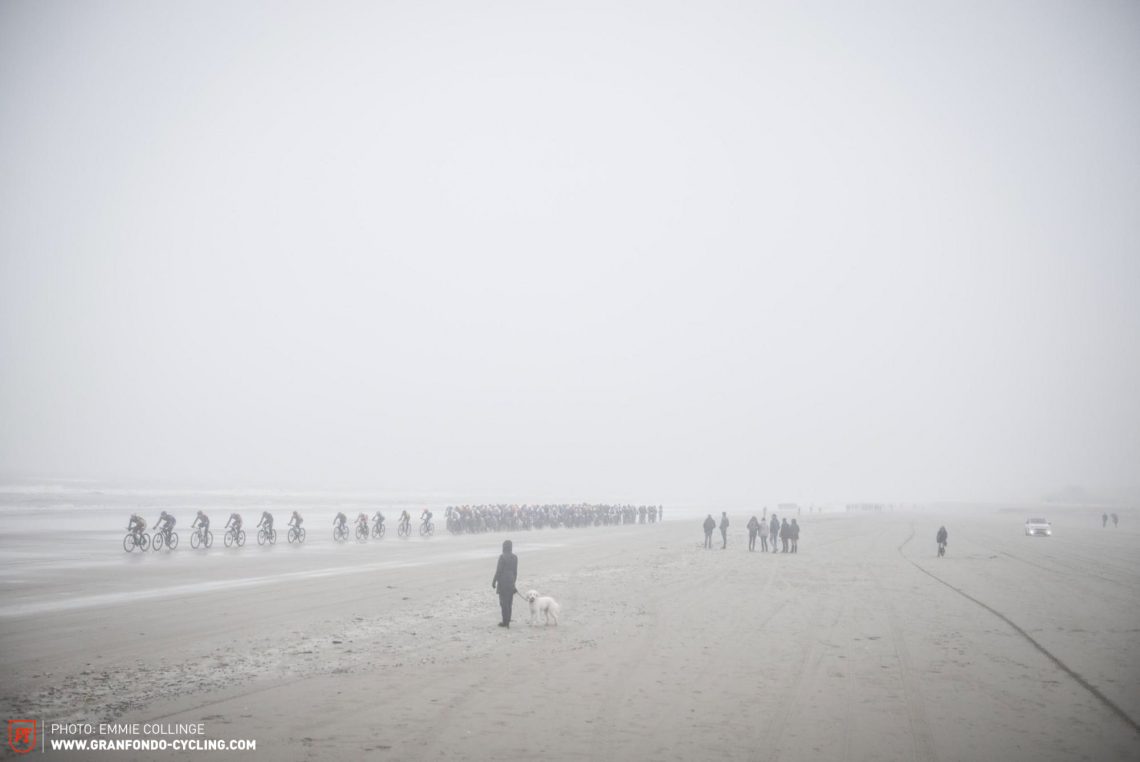
There is something about beach racing that strikes us as very similar to the early days of mountain biking. Because like those early days, it is clear that there is not much common consensus about the bikes that each beach bike producer creates. Dennis’ Wikkit Cycles are certainly following their own path. Taking inspiration from 29ers as well as his passion for snowboarding, these bikes are well built for the task of riding on the sand. He explains: ‘With sand you need to steer with your legs, like you would a snowboard, so we make all our bikes longer, running shorter stems and either straight, dropper, Dutch bars, moustache or even curly wurlies [yes, we got lost too – ed]. The biggest challenge is getting the bike geometry right so it doesn’t shimmy at high speeds. Top riders can hit up to 70kph with tailwinds, meaning we need to think about a lot of factors.’ This in-depth approach almost seems at odds with the pirate-like vibe of Beach Bastards and the Wikkit brand, but it is testament to the knowledge and passion of Dennis, who clearly sees a future in the sport, something that after all this talk we were itching to try for ourselves.
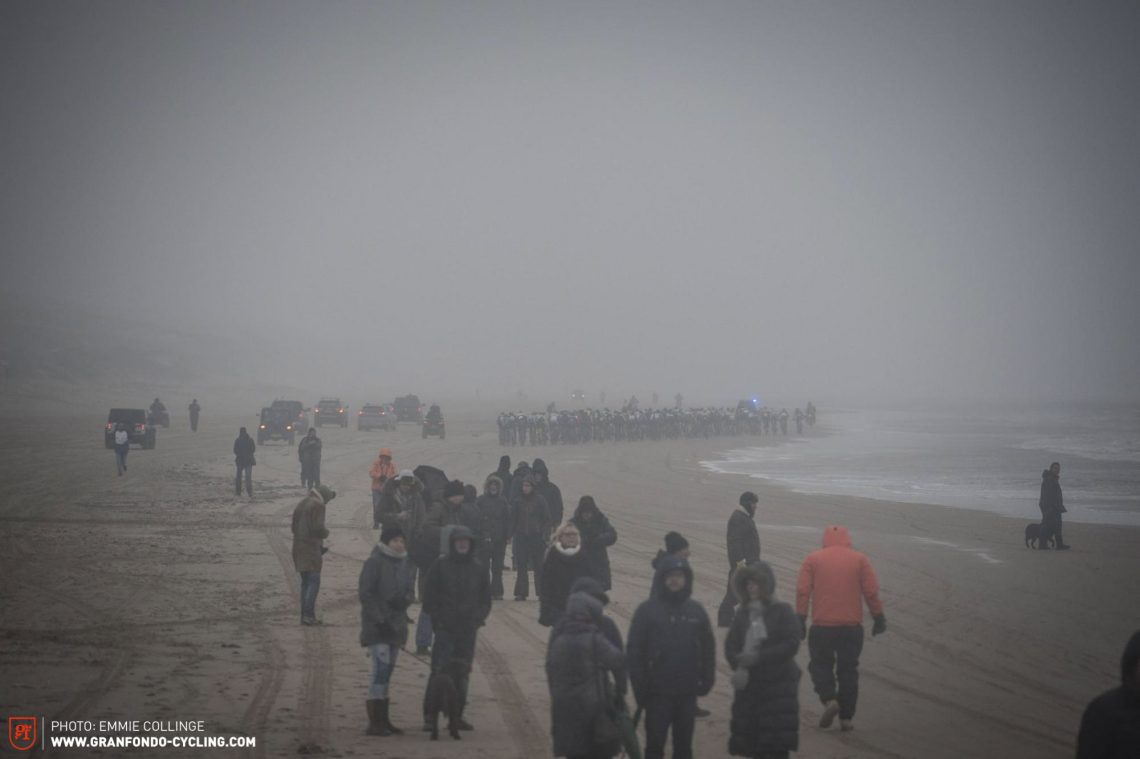
Battling in the storm – Race Day
We’re only 3 km in and the race has already been blown to pieces, seeing small pelotons forming, riders ditching their soloist mindsets knowing that sharing the effort via short-lived alliances is better than battling alone. For those who missed the first main group, they’re strung out in an increasingly nervous line that’s buffeted towards the thicker, harder sand by the winds. Today, we’re told, the winds are gusting at 50 km/h.

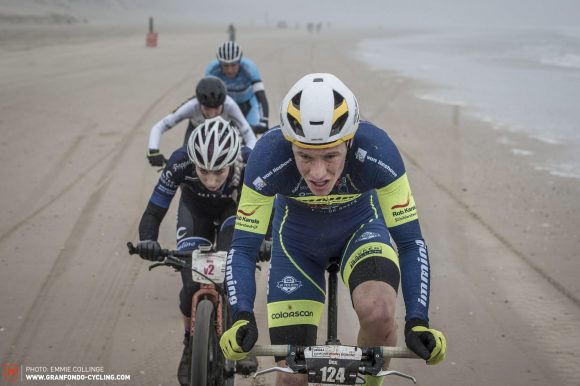
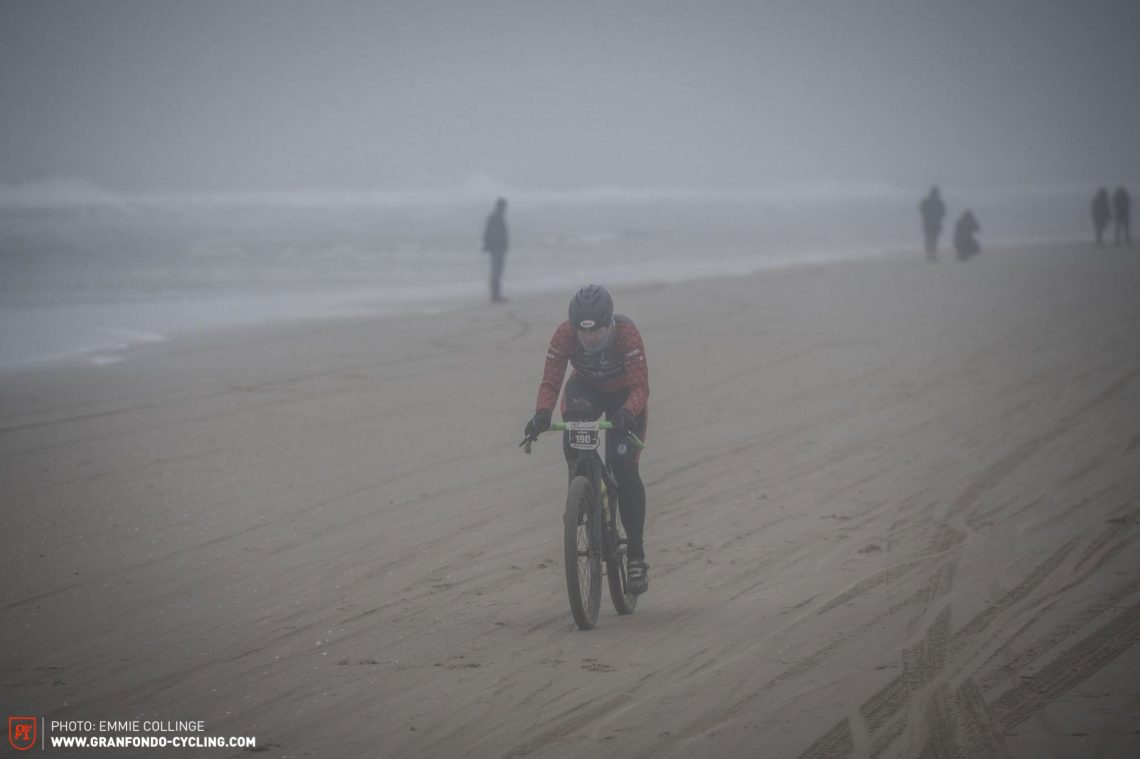
To bridge between groups and inch closer to the main, much faster, much safer peloton, you need a wheel to hold or brute strength. These efforts have to be judged because the words of advice from Dennis still ring on our ears ‘The return leg is where the race will really start, and you’ll need your power then.’
He’s right. We ride in the red for the full 80-odd minutes. The leaders are back in around 70 minutes, but we’d started in the less competitive business race, a handful of minutes adrift of the leaders before we’d even hit the beach so that dashed our hopes of the main peloton already. It’s a hard fight across the beach, but picking off those who get spat out by the peloton is strangely satisfying. Back at Dennis’ bike shop, we slowly regain sensation in our extremities as we recover from the effort. There’s plenty of coffee and pea soup on tap to warm us up, but we’re more interested in a cold beer and frites for our post-race debrief. Our photographer recounts the lead group, as he tries to salvage his camera after hanging on the back of a pick-up to shoot the race in the storm.
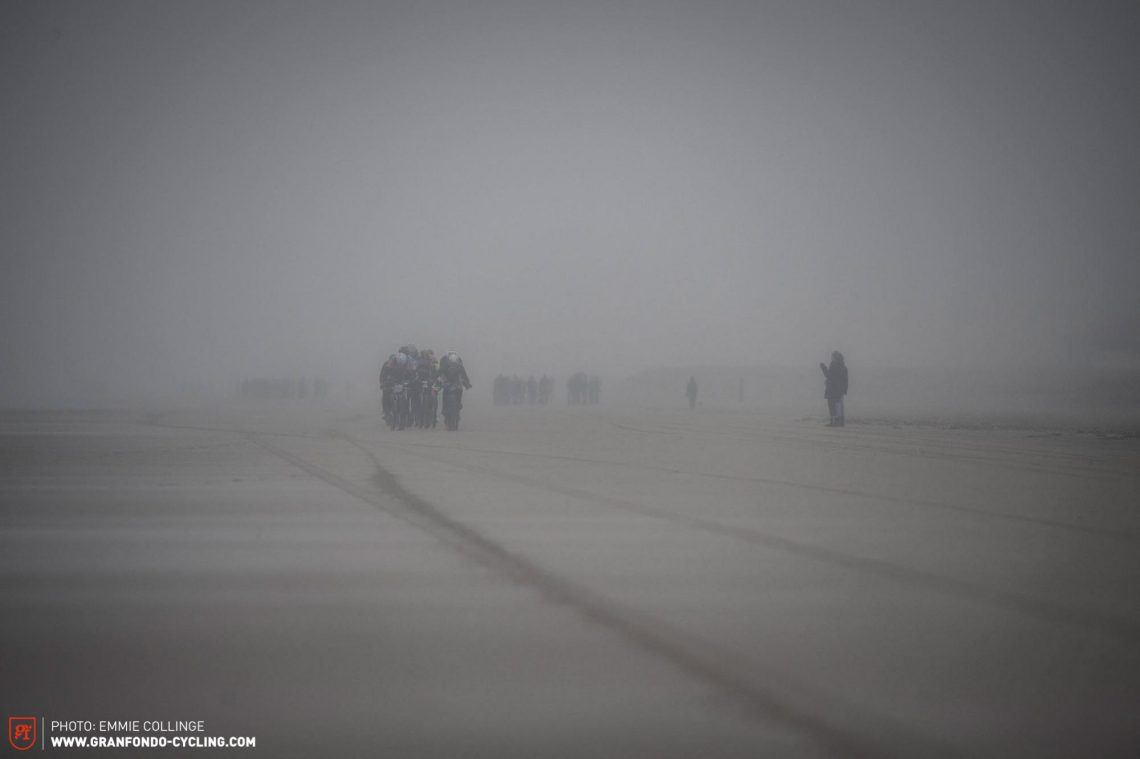
It’s hard to actually sum up what Beach Racing is: it’s a sort of crit meets cyclo-cross race, meets mountain bike XC race, where you’re riding full gas from the start, battling both the terrain, the competition and the elements. There’s a definite charm to the sport, we conclude smugly, watching the storm continue to rage outside, the rain clouds rushing by, chased onwards by the strong North Sea winds. The sense of satisfaction that comes from partaking and surviving this battle washes over us. We’re now taking an excessive amount of sand home in our suitcases, windburned faces and aching muscles, which translates to a great weekend with some unbeatable tales to tell.

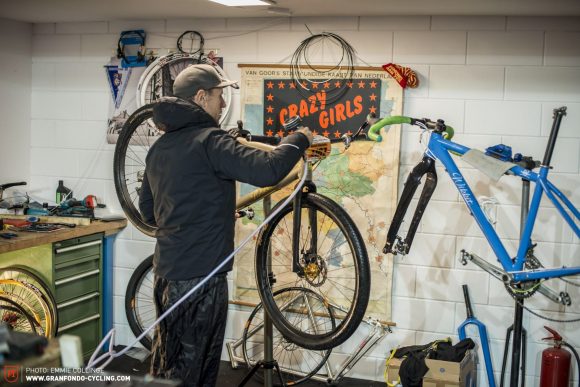
For more information about the event, head over to aguegmondpieregmond.nl
Did you enjoy this article? If so, we would be stoked if you decide to support us with a monthly contribution. By becoming a supporter of GRAN FONDO, you will help secure a sustainable future for high-quality cycling journalism. Click here to learn more.
Words & Photos: Emmie Collinge


